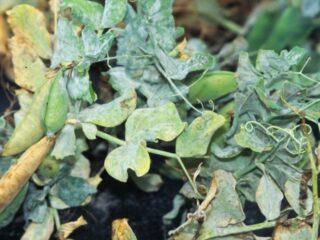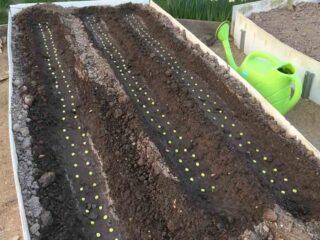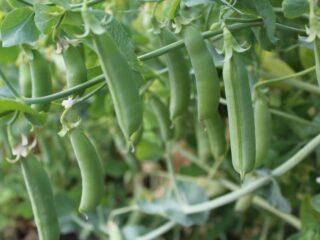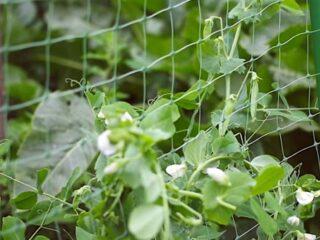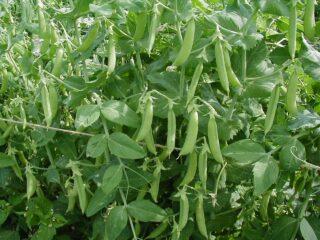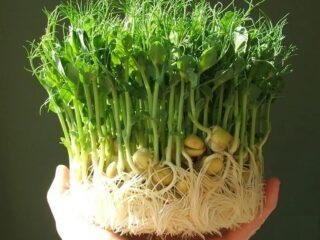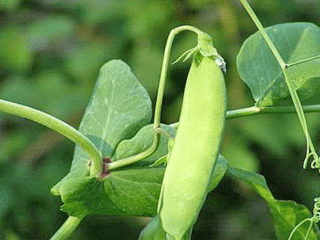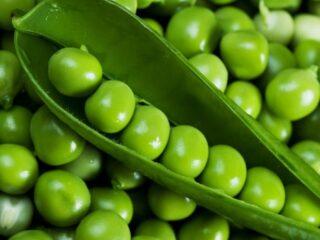Content
Pea aphids are an insect that brings many problems to gardeners and summer residents. This type of pest feeds exclusively on legumes and often attacks their young, succulent sprouts. There are several ways to get rid of aphids, but the sooner you notice their colonies and begin to exterminate them, the more sense the fight will have. Sometimes it happens that plants cannot be saved from its invasion.
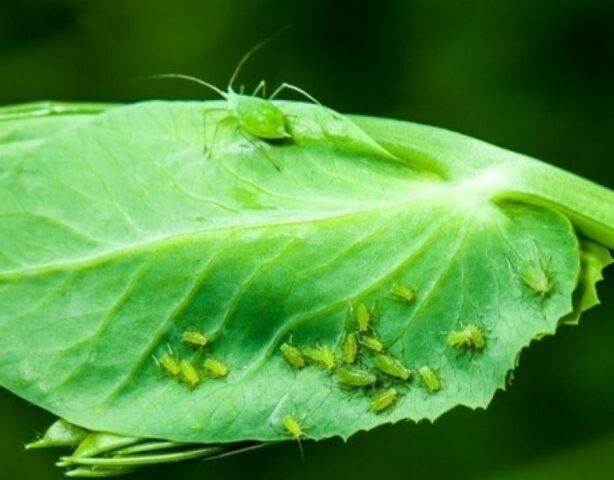
Pea aphid is a non-migratory insect that is dangerous to legume plants.
Description of pea aphids
This type of pest is quite large in size compared to other varieties, so it can be quickly detected in the garden. On average, the pea aphid has a body thickness of 0.5 cm, the length of the female is up to 4.5 mm, and the length of the male is up to 3 mm. The insect is predominantly green in color, but sometimes brown or pink individuals are found. The pea aphid is oval-shaped; the presence of wings depends on the generation. The antennae of individuals are longer than the body, consist of six segments, of which the first four are green and the rest are dark. The paws are also darker than the body.Pea aphids feed using sap tubes and pierce plant leaves with their proboscis.
Features of reproduction
Aphids reproduce quite quickly, but their life cycle is short. In one season, approximately 10-15 generations of an insect change. Pea aphids can reproduce both by fertilization of a female by a male, and unisexually (parthenogenesis).
The first generation appears in the spring, from eggs that have overwintered on the stems of perennial legumes. The hatched larvae begin to feed and form wingless virgins, each of which lays 50 to 170 larvae. Individuals without mating can give birth to up to ten babies (winged virgins) per day. In the third generation, female dispersers appear. They fly from one plant to another, and each gives birth to up to 30 larvae.
Summer babies develop in about ten days, as a result of which the aphid colony grows very quickly. Closer to autumn, normal females appear on the plants, which need a male to continue the race. After fertilization, they lay overwintering eggs in the root zone of legumes.
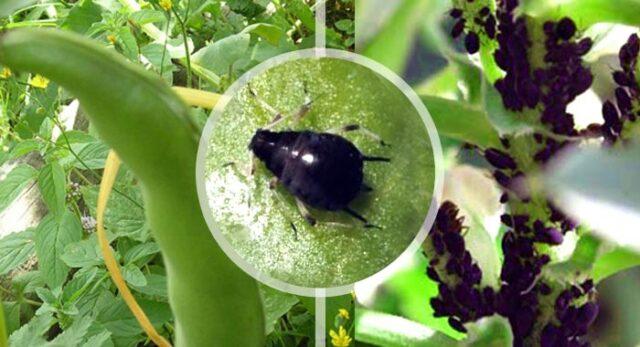
Aphid eggs start out green but become almost black over time.
Habitat
Pea aphids love to settle most of all in beds with alfalfa, sainfoin, clover, vetch, forage legumes and, of course, peas. Prefers to live on the underside of pods and leaves. The insect is found all over the world: in Europe, Kazakhstan, the Mediterranean, North Africa, America. In Russian regions, pea aphids are widespread in the Ural, Central, Volga-Vyatka, Volga, North Caucasus and other regions. It can be found almost everywhere, even at 67° north latitude.
Where and why does it appear?
When the time comes for peas to ripen, their stems become rough, and it is during this period that a generation of winged aphids appears. Its individuals fly to the shoots of more succulent perennial crops, where sexual individuals begin to develop. Around October they lay eggs and go to winter. In the spring, these eggs hatch into larvae that gradually spread throughout the area. With the arrival of warm weather, pea aphids reproduce faster, and their colonies become larger every day.
Why are pea aphids dangerous for the garden?
The pea aphid greatly harms the crop plants it attacks. Congestions of this insect inhibit their development and growth, causing a sharp reduction in the amount of harvest. Insects gather in colonies at the ends of growths, leaf blades, stems, and use a proboscis to suck out the juice from the shoots. If you do not start fighting pea aphids in time, the leaves of the plant begin to curl, the pods become deformed and become smaller, the bush weakens, lags behind in development, the flowers do not form an ovary, and the yield is reduced by 30-50%. If the colonies are numerous, then the plantings may completely die, and the crop will not have time to ripen at all.
In addition to the fact that pea aphids and their larvae live and feed on plants, they are also dangerous because they spread various viral diseases. It should also be noted that in the presence of a pest, the number of ants in the beds increases. They protect the insect from predators because they prefer to feed on the sweet liquid that the pea aphid produces.
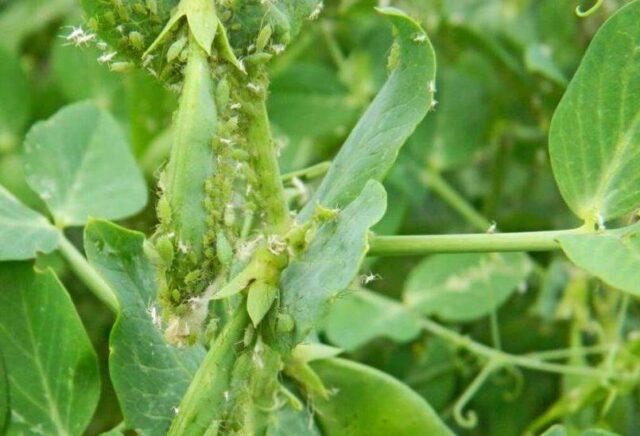
Wingless females, which produce the largest number of larvae, pose a particular danger to the garden.
Measures to control aphids on peas
As soon as pea aphids are discovered, control should be started immediately. This can be done in different ways:
- agrotechnical;
- chemical;
- folk.
The most effective, but at the same time less gentle means used to exterminate pea aphids are chemicals.
Agrotechnical measures
A simple method of protecting the garden from the invasion of the pea aphid insect is to sow perennial plants far from annual ones. With such site planning, winged females will not be able to fly from one type of crop to another. In addition, you can grow early varieties of legumes, since the pea aphid, compared to them, is significantly behind in development, which is why they are less susceptible to its effects. It is also important to periodically get rid of weeds to prevent the spread of the pest and mow perennial grass, destroying eggs along with it.
Throughout the season, do not forget to periodically inspect the plants so as not to miss the moment when pea aphids appear on them. You can also protect your plantings by attracting birds to the garden beds or by planting crops with a strong smell nearby: dill, garlic, onions.
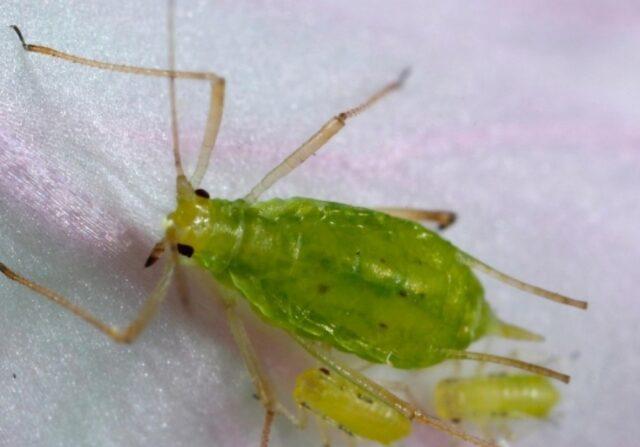
Pea aphids and their larvae are well destroyed by artificial irrigation
Chemicals
Chemical compounds are the most effective drugs that kill pea aphids. Only when using them should one take into account at what stage the culture is growing.Insecticides can be used only before flowering, until pea aphids have reached their maximum. It is best to use proven products for processing, such as Phosfamide or Karbofos (0.2%), Chlorophos (0.4%). Corado, Iskra, Aktara, Biotlin, Ectobacterin, Kinmiks and Confidor also have a strong effect.
All of these drugs kill the pea aphid in just a couple of days, but when using them it is important to follow some rules: carefully follow the instructions, observe the dosage and safety measures. It is better to carry out work with insecticides in the evening, in calm weather. It is advisable if the day is cloudy but dry.
Sometimes pea aphids die immediately after spraying the drug, but some individuals lose their vital functions only on the second or third day.
Folk methods of struggle
Pea aphids can also be exterminated using traditional methods. Usually they are resorted to when there are a small number of individuals. Treatments are carried out with solutions and infusions, which can be prepared by any summer resident from available ingredients. A product made from onion peels has proven itself to be quite good: take 5 liters of water per 200 g of the component, leave for two days, filter, pour into a sprayer and process. You can also make a mixture based on tomato or potato tops. To do this, pour 0.4 kg of greens into 10 liters of water and leave for a couple of days. Pea aphids do not tolerate a solution prepared from a bottle of vodka and 300 g of dandelions. Before use, 100 ml of infusion is diluted in 3 liters of water and irrigated with the planting mixture. A useful weed in pest control is celandine.Its green parts in the amount of 2 kg are poured with five liters of hot water, left for a couple of hours and sprayed with the composition of the bed.
Conclusion
The pea aphid is a small harmful insect that can destroy entire fields of legumes. It multiplies very quickly and spreads throughout plants, so it is important to start combating it in a timely manner. It’s even better to carry out preventive measures in time and properly care for the crops so that pea aphids never appear in the beds.
